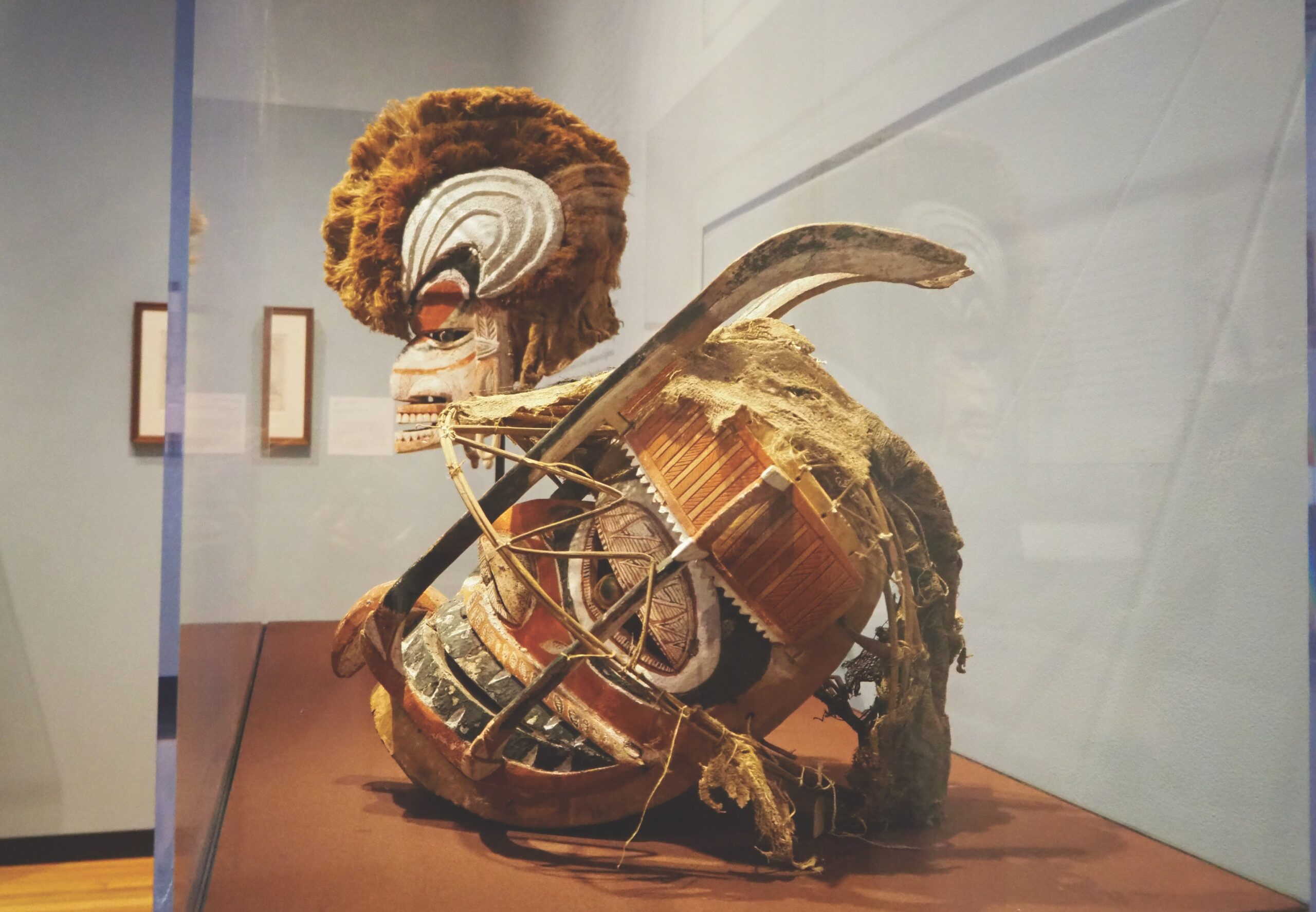Mask mania: New BCMA exhibit explores Papua New Guinean funeral masks
November 11, 2022
 Chinwe Bruns
Chinwe BrunsThis fall, the Bowdoin College Museum of Art (BCMA) opened its new exhibition of Papua New Guinean funeral masks titled “The Masks of Memories: Art and Ceremony in Nineteenth Century Oceania.”
The exhibition shares the powerful history of the masks, detailing their creation on the island of New Ireland, their significance as cultural artifacts and the way in which they were acquired by the BCMA. Since diplomat Harold Sewall’s donation of the ceremonial masks in 1898, museum-goers haven’t had the chance to view these masks together—until now.
Exhibition curator Allison Martino was especially excited about giving the masks the spotlight she thinks they deserve.
“The masks have been included alongside other works in the collection and looking at them through different lenses, I was really interested in dedicating an exhibition to this particular subject matter,” Martino said.
The wooden masks date back to the 19th century. Typically, before a community member died, they would commission a painted mask to be used during their funeral ceremony. After the ceremony the masks were discarded, which meant there was no visual archive from which the carver could base their designs. For Martino, this context highlights the interplay between ephemerality and memory.
“These masks were designed to be ephemeral. After they were used after the funeral performance, they were discarded,” Martino said. “Because they were such ephemeral objects, they were really relying on memories of what they had seen before and creating new works.”
When developing this exhibition, Martino had three central ideas in mind: creating, performing and collecting.
“The first two [ideas] focus on the masks themselves, and I was interested in looking at the production of these masks. I also wanted to bring attention to the use of these objects; that these are works that would have been danced in during [funeral] ceremonies … they would [then] be discarded,” Martino said. “The third section on collecting came out of my research into how these masks ended up in Bowdoin’s collection.”
The significance of Maine among the intersection of many cultures is heavily emphasized in this exhibition. The display allows its audience to learn more about artistic tradition from a culture that many individuals may not have come across in their education.
“One of my hopes is that people will take away a better understanding of the relationships or exchanges that transpire between people in Maine and people and cultures in Oceania, specifically New Ireland, in this case, during the 19th century. That was something that was really important to me and thinking about the local audiences at Brunswick and other parts of Maine,” Martino said.
Co-directors of the BCMA Anne and Frank Goodyear hope people will take time to acknowledge the cultural significance of these pieces and the value of having them in a place where many can take the opportunity to cherish them and to learn from them.
“I hope that visitors … [are] aware of the larger and deeper meaning of the reception of these pieces, and the responsibilities we have as museum-goers and as curators to be sensitive to the questions that we bring to the pieces in the present day,” Anne Goodyear said. “Again, to think about the role that objects can play in opening up new narratives and new ways of understanding the world around us, and the interactions and intersections of cultures over time.”
BCMA security guard Jim Blood appreciates the exhibition’s rejection of Eurocentrism.
“I like the fact we as a museum are looking at things that people would not ordinarily look at, since many think of art as being European,” Blood said.
Many who have seen the exhibition have marveled at the intricacy of the masks as well as the cultural significance behind them. The masks and their purpose stand within the BCMA’s walls, ready to share their history until July 16, 2023.

Comments
Before submitting a comment, please review our comment policy. Some key points from the policy: